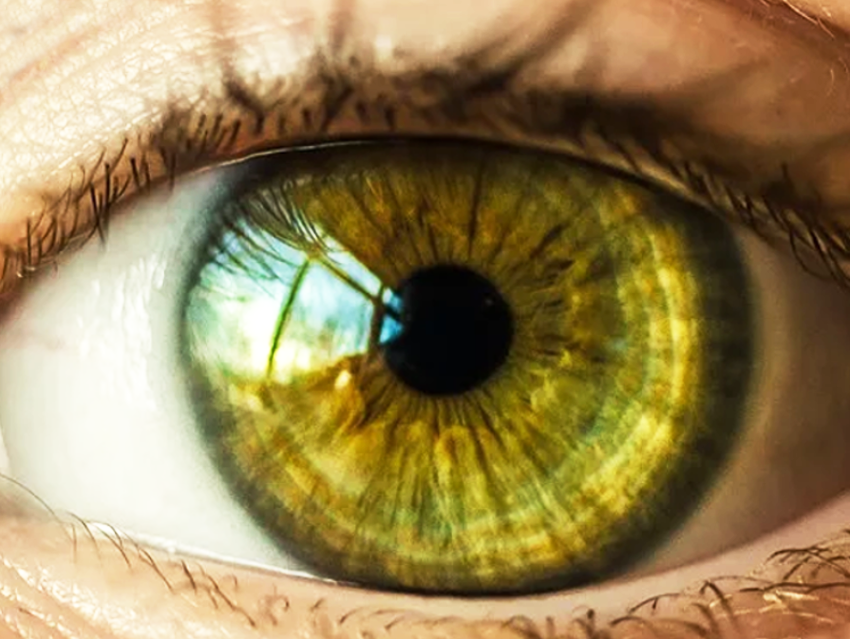When you’re watching a science fiction movie and the superhero or villain suddenly has glowing eyes, usually, the digital film material has been edited. Another realistic possibility is that the actor is wearing contact lenses with integrated light sources. Unfortunately, even the tiniest light-emitting diode (LED) needs power. Rigid batteries will not fit in contact lenses, and wires extruding from the lenses are hardly a convenient solution.
Korean material scientist Jang-Ung Park from Yonsei University, Seoul, and polymer chemist Sang-Young Lee from Ulsan National Institute of Science and Technology, together with their colleagues have designed a flexible supercapacitor that is tiny enough to fit in a 1-cm-sized contact lens. The device can be charged wirelessly to power a light-emitting diode also sitting in the contact lens. Besides giving the wearer glowing red eyes, the researchers envision applications such as continuous body monitoring and augmented reality.
Adaptive Supercapacitors
Supercapacitors consist of electrodes that form an electric double layer when they are charged. In that double layer, they cannot store as much energy as batteries, but they offer quick charging, high energy densities, and long cycle lives. Supercapacitors are, therefore, used in devices that need to be charged in short times to obtain high energy densities, such as screwdrivers, handheld medical devices, and expensive smartphones. Some cities are currently testing supercapacitors that are integrated into the roofs of electric buses. At every bus stop, they are wirelessly recharged to receive enough energy for the next ride.
For the smart contact lenses, the Korean scientists followed the same principle as was used for the electric buses, but on a very different scale and with very different materials. To match the properties of the soft lens material, they developed flexible and stretchable electrodes and combined them with a non-leaking polymer electrolyte. The supercapacitor was then integrated into an electronic circuit containing the LED and a transparent antenna, and all was embedded in a silicone monolith in the shape of a contact lens.
Smart Contact Lenses
Such an elaborate architecture requires printed electronics; and so the scientists designed novel inks for both, the electrode material and the electrolyte. For the electrodes, they dispersed activated carbon, multiwalled carbon nanotubes, and a binder in polyvinylpyrrolidone and printed this ink on very thin gold wires in the shape of an open double ring, slightly smaller than a contact lens, which served as current collectors. For the electrolyte, the scientists mixed an ionic liquid with a UV-curable polymer, applied the pre-electrolyte ink on the electrodes, and cured the mixture. The complete supercapacitor was flexible and would encircle the pupil of the eye, without obstructing its view.
Power from Above
For wireless charging, the scientists fitted a transparent antenna coil made of silver nanofibers, a rectifier, and an LED load, and closed the electric circuit. Then, everything was cast in silicone, the contact lens material.
Who would volunteer to test the function of the lens? The researchers checked parameters such as heat development and stability with a test dummy and on rabbits, but eventually, a real-live colleague had to “lend” his eye. For charging, the charging device was held directly in front of the eye in which the test person was wearing the contact lens (at a distance of half a centimeter), and immediately the LED began to glow.
It continued to glow for some minutes until the supercapacitor was fully discharged. The glowing red eye looked impressive, almost Superman-like, but the researchers point out that switching on light sources in contact lenses was not the only purpose of their research. Sensors in contact lenses could directly and continuously measure body markers such as sugars and electrolytes in tear fluid. They also plan to develop soft, smart contact lenses as a platform for miniaturized wearable electronics.
- Printing of wirelessly rechargeable solid-state supercapacitors for soft, smart contact lenses with continuous operations,
J. Park, D.B. Ahn, J. Kim, E. Cha, B.-S. Bae, S.-Y. Lee, J.-U. Park,
Sci. Adv. 2019, 5(12), eeay0764.
https://doi.org/10.1126/sciadv.aay0764




